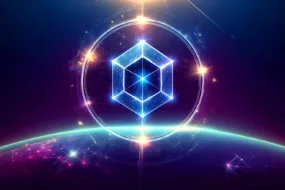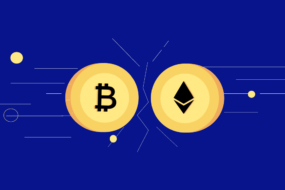
Non-fungible tokens (NFTs) have taken the world by storm, revolutionizing how we think about digital ownership and authenticity. In 2022, the NFT market generated a trading volume of around 24.7 Billion USD. And about 101 million NFT trades were recorded throughout 2022. Now, do you also want to take part in NFT trading? If you’re curious about how to start trading NFTs, there are a few key things to keep in mind. In this guide, we’ll explore the basics of NFTs, how to find and purchase them, and some tips and tricks for successful NFT trading. So buckle up and get ready to dive into the exciting world of NFTs!
What Are NFTs?
NFTs, or non-fungible tokens, are digital assets that represent ownership of a unique item or piece of content, such as digital art, music, videos, and even tweets.
Unlike cryptocurrencies, such as Bitcoin, NFTs are not interchangeable with one another. Each NFT represents a specific item with its own unique value and ownership.
To understand NFTs, imagine you have a ‘trading card collection.’
Each card has a specific image, rarity, and value; you can trade them for other cards or money. Now imagine that your trading cards are digital, and each one is a unique, one-of-a-kind item. That’s what NFTs are.
One of the most famous examples of an NFT is the digital artwork “Everydays: The First 5000 Days” created by Beeple. It was sold at a Christie’s auction for $69 million in March 2021. The artwork is a collection of digital images that Beeple created over the course of 13 years.
Another example of an NFT is a tweet by Twitter CEO Jack Dorsey, which he sold as an NFT for $2.9 million. The NFT includes a digital certificate of authenticity and ownership of this tweet, which cannot be replicated or copied.
The value of NFTs is primarily driven by the perception of their uniqueness and scarcity. While anyone can view or share a digital artwork or tweet, owning the NFT represents exclusivity and ownership that cannot be replicated.
Also, the blockchain technology that underpins NFTs ensures that ownership of the NFT is secure and transparent.
How to Trade NFTs
1. Finding NFT marketplaces
Some popular NFT marketplaces include OpenSea, Nifty Gateway, SuperRare, and Rarible.
To find a good NFT marketplace, consider the following factors. We will take OpenSea as an example to evaluate these factors.
1.1 Reputation and credibility
Look for a marketplace with a good reputation and a proven track record of secure transactions. Check ratings on online forums and social media platforms. If we take OpenSea, it’s one of the world’s largest and most popular NFT marketplaces.
1.2 User interface
Choose a marketplace that has a user-friendly and easy-to-navigate interface. This will make it easier to buy and sell NFTs. OpenSea’s website and mobile app provide a user-friendly interface that makes it easy for traders to transact NFTs.
1.3 Fees
Look for a marketplace that has reasonable fees for buying and selling NFTs. Some marketplaces charge high fees, so know what you’re getting into before trading. OpenSea charges a transaction fee of 2.5% on all sales, which is lower than some of the NFT marketplaces.
1.4 NFTs categories
Choose a marketplace that has a diverse selection of NFTs to choose from. This will give you more options and increase your chances of finding something you’re interested in. OpenSea offers NFTs across various categories — art, gaming, sports, collectibles, etc.
1.5 Community and support
Look for a marketplace with an active community of buyers and sellers and good customer support. This will help you feel confident about buying and selling on the platform. OpenSea has a vibrant and supportive community of users, including creators and collectors. The company also provides customer support via email and social media. It has an extensive knowledge base and FAQ section on its website.
2. Setting Up Your NFT Wallet
Setting up an NFT wallet involves the following steps.
1.1 Choose a wallet
Several NFT wallets, such as MetaMask, MyEtherWallet, and Trust Wallet, are available. Choose the one compatible with the blockchain on which the NFTs you want to buy or sell are based. For example, Metamask is compatible with blockchains like Ethereum, Binance Smart Chain, Polygon, etc.,
1.2 Install the wallet
Once you have chosen a wallet, download and install it on your device.
1.3 Create a wallet
Follow the instructions provided by the wallet to create a new one. This usually involves creating a password and a recovery seed phrase, which you should keep somewhere safe.
1.4 Fund your wallet
To buy NFTs, you will need to have cryptocurrency in your wallet. If you choose Ether (ETH) to make the NFT transaction, use a crypto exchange to buy ETH and transfer it to your NFT wallet address.
1.5 Connect to a marketplace
Once you have cryptocurrency in your wallet, you can connect it to an NFT marketplace. It’s important to remember that setting up an NFT wallet can vary depending on your wallet and blockchain.
3. Buying NFTs
To buy NFTs, you must browse the marketplace and find an NFT you want to purchase. Once you have found an NFT you wish to buy, you must bid or purchase the NFT at the listed price. To complete the transaction, you must have the required cryptocurrency in your NFT wallet.
4. Selling NFTs
To sell NFTs, you must create an account on the NFT marketplace and connect it to your NFT wallet. You can then list your NFT for sale at your chosen price or set up an auction for your NFT. Once your NFT sells, you will receive the payment in cryptocurrency in your NFT wallet. You can then exchange it for fiat currency if desired.
It is crucial to remember that some marketplaces charge fees for listing and selling NFTs. As mentioned, OpenSea charges a transaction fee of 2.5% on all sales, which is lower than some of the NFT marketplaces.
Tips for Successful NFT Trading
1. Do your research
Before investing in NFTs, it is vital to research and understand the market trends, the artists and creators behind the NFTs, and the potential long-term value of the NFT.
2. Set a budget
Set a budget for buying and selling NFTs and stick to it. Don’t get carried away by hype or FOMO (fear of missing out) and overpay for an NFT.
3. Understand the market
Understand the market dynamics of NFTs, including supply and demand, price fluctuations, and market trends. This will help you make informed decisions when buying or selling NFTs.
4. Verify authenticity
Verify the authenticity of an NFT before buying or selling it. Look for a verified signature, a unique token ID, and a link to the original artwork.
5. Understand the value of NFTs
The value of NFTs is primarily determined by their perceived uniqueness, scarcity, and authenticity. Hence, it is essential to assess if these factors are present in the NFT you are looking to purchase.
6. Build relationships
Build relationships with other NFT traders, artists, and collectors. Networking can help you learn more about the market and find new opportunities.
7. Be patient
NFT trading can be volatile, so be patient and don’t panic if prices fluctuate. Hold onto your NFTs for the long term if you believe in their value. Also, setting realistic expectations and not investing more than you are comfortable losing is crucial. NFT trading can be exciting and profitable, but it is essential to approach it with caution and patience.
Conclusion
NFTs offer a new and exciting way to invest in digital assets, allowing you to own and trade unique and one-of-a-kind items that hold real value in the marketplace.
Whether you’re a collector, investor, or just curious about this emerging technology, trading NFTs can be an exciting experience.
Following the tips and strategies outlined in this guide, you can start your journey toward becoming a successful NFT trader.
So don’t wait any longer; start exploring the world of NFTs today and see where this exciting new frontier takes you!
FAQs
1. What is the difference between NFTs and cryptocurrency?
NFTs and cryptocurrency are digital assets created and traded on blockchain networks but serve different purposes.
A cryptocurrency is a digital currency that can be used as a medium of exchange. NFTs are unique digital assets representing ownership of a specific item, such as artwork or collectibles.
2. How do I know if an NFT is authentic?
To ensure an NFT is authentic, you can verify its authenticity on the blockchain network on which it was created.
Each NFT has a unique code, or “smart contract,” that verifies its authenticity and ownership. You can use blockchain explorers or the marketplace where the NFT was purchased to check the same.
3. How much does it cost to trade NFTs?
The cost to trade NFTs varies depending on the marketplace and the blockchain network used. Each transaction on the blockchain network requires a fee, known as a “gas fee,” to cover the cost of processing the transaction.
Some marketplaces may also charge a commission or transaction fee for buying or selling NFTs. These fees can range from a few cents to hundreds of dollars.
For instance, OpenSea charges a transaction fee of 2.5% on all sales, which is lower than some of the NFT marketplaces.
4. Can I trade NFTs on a mobile device?
Yes, you can trade NFTs on a mobile device if your marketplace has a mobile app.
Many NFT marketplaces, such as OpenSea and Rarible, have mobile apps allowing you to buy and sell NFTs. Also, you can access some marketplaces through mobile web browsers.




